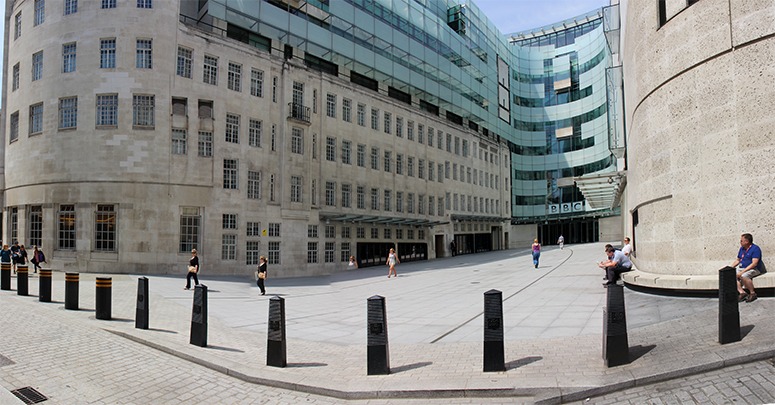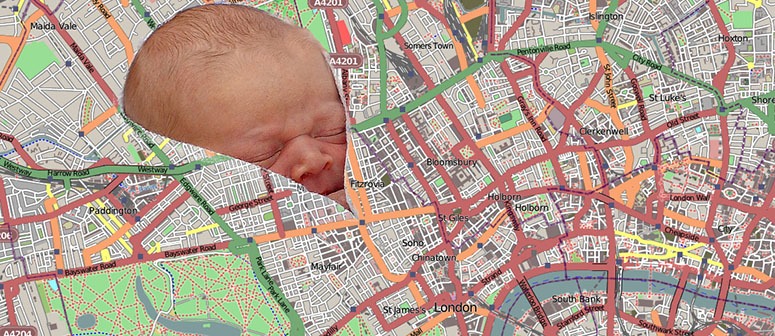Category Archives: Landscape Architecture
Would a future queen have been better for the urban landscape?
Gardenvisit.com welcomes the Royal Babe. Hurrah boys, hurrah!
The boys are due a turn on Britain’s throne but would a royal girl have been better for the urban landscape? The two Elizabeths and Victoria did very well and I hope no one will claim superiority for one or other sex. But they have different talents – and were not much interested in landscape design.
At Sissinghurst, though both owners were gay, the man did more on the layout and the woman did more on the details. If these are general characteristics, what does London’s greenway system need most (though it obviously needs both)? I think what it needs is common sense and practicality. The design exists and is taking shape but it has been dogged by dumb ideas – like Abercrombie’s idea of treating the links between parks as ‘green corridors’ and Boris Johnson’s idea of getting a cycle system on the cheap by painting lines on roads. With regard to bicycle transport planning what London needs is profound good sense eg (1) create cycle routes through most parks (2) make very many of the paved sidewalks beside roads into shared pedestrian-cycle paths (3) invest money in cycle planning on a scale which is proportionate to the capital invested in other transport modes – and keep on increasing the expenditure as cycle transport expands. This policy would result in an enormous increase in expenditure on cycle facilities – which would result in homengous increase in commuter and leisure cycling. I hope nobody will want to put my neck on a block for saying it, but I think London would be more likely to adopt these policies under female patronage. But there is hope: I think cycle planning would have appealed to Diana more than to Charles and I think the spirit of Diana, in the person of William, is second in line to the throne. So if King Billy the Fifth does this job then we may well be in need of more strategic planning by the time his son takes over. I therefore recommend Henry for the babe’s first name – remembering that Henry VIII was London’s greatest open space planner, even if it was done for personal reasons, it is time for a Henry IX. All this, of course, is from the standpoint of London open space planning. Perhaps the ‘best of all’ option would be a Gay King Henry – though I can imagine this not being too popular in some parts of the Commonwealth.
The landscape architecture of the BBC Plaza in Portland Place

http://www.guardian.co.uk/commentisfree/2013/jul/02/rein-top-pay-mps-poor-furious Simon Jenkins
Most of us puzzle about how the BBC spends its money but a former editor of The Times (Simon Jenkins) explains the process in easy terms: You are sitting with some friends round a table on which is stashed £60m. It comes from a poll tax on television sets, free of Treasury control, and you can do with it what you like. You can use it for better television programmes, give it to low-paid staff or even return it to the taxpayer. No one will know, except a bunch of toothless trustees. So you smile nervously at one another, reach forward and pocket as much loot as you can grab. With this guidance we can imagine how the BBC Plaza on Portland Place came to take its shape:
BBC Boss Will the planners buy MJP’s design for the building?
Majordomo Yeah. MJP say we shouldn’t have any problems. The design is a re-conceptualised post-transmogrification of the 1928 Val Myer and McGrath design. It plays on the neo-classicism of Nash’s All Soul’s Church and the Art Deco of Broadcasting House.
BBC Boss OK. How about the plaza then?
Majordomo We could have a great landscape design. But it would cost money.
BBC Boss Yeah. Let’s slab it. Then use lettering to advertise all the lucky countries we broadcast to.
Majordomo Yessir. It’ll cost some brass farthings but won’t dent our pension pot.
Luckily, it is not too late to add an installation: a cloud canopy of glass sheets to make an outdoor-indoor space for people and plants. Image inspiration 1 Image inspiration 2
We welcome the Royal Baby and hope London's Greenway Network will have a King Queen Champion
What are kings and queens for in the 21st century? I don’t know, but opening hospitals and attending state funerals does not seem ALL THAT useful. Gardenvisit.com is therefore putting in a pre-natal plea for the Royal Baby to become a patron of London’s Greenway Network. Princess Di used to run incognito in Kensington Gardens and I wished at the time that she had laid the foundation for a Scandinavian-style Cycling Monarchy. It would be wonderful if her first grandchild could lead London, as Henry VIII and Charles II did, in the creation of a London Greenway Network. It should provide for green transport and green recreation throughout London. Though welcome, Boris Johnson’s cycleways are not places of pleasure. London needs greenways fit for kings and queens and royal babes.
Garden design ideas
Garden design ideas point to an overlap between the histories of garden design and landscape architecture:
- Both disciplines relate ‘the works of man’ to ‘the works of nature’
- Their design ideas and histories are inter-twined
- They involve the composition of landform, water and planting with vertical and horizontal structures
- They are concerned with what Norman T Newton called Design on the land and Geoffrey Jellicoe called The landscape of man.
- They are influenced by art but differ from from ‘art’, because ‘designed’ objects have utilitarian functions. [If ‘art’ is regarded has having functions then they concern the mind more than the body – if one regards mind and body as separate entities.]
Gardens are better places for exploring design ideas than public landscape architecture, because they tend to be smaller, because they are less utilitarian and because they have private clients who often care more about ideas than impersonal public clients.
Design history is a rich source of ideas. But historical designs are best treated as timeless patterns of the kind advocated by Christopher Alexander in his book on The Pattern Language, unless one is doing on historic restoration or re-creation project. I find art-historical categories provide the best approach to the classification of periods in the history of designed gardens. But nationalistic and dynastic categories also have their uses.
Chelsea Fringe Pop Up Park at Battersea Power Station
Among the great days in the life of a building project are the client’s commitment to the design, breaking the turf, topping out and handing over the completed project to the client. Between these high-days there can be longueurs – and vacant land. We have been waiting 30+ years for Battersea Power Station to be re-developed and it was an enlightened move by the developers to make a temporary park on the waterfront as a Chelsea Fringe Project. It benefits the public and attracts attention to the development: win-win. Self-appointedly, on behalf of the people of London, I also thank the Pop Up Foundation for publicising a set of good causes. As you can see from the video, the cause with most appeal for me was Find-a-Fountain. The aim is to rid the world of those evil plastic bottles in which water is sinfully sold for a higher price/litre than diesel fuel! It’s amazing that we let it continue. Just think how much good would result from banning the sale of bottled water:
- less litter on beaches
- less landfill
- fewer litter collection vehicles
- less oil used in making disposable bottles
- less fuel in transporting bottles smaller shops, because they need no shelves for water
The Pop Up Event is very English: we love what their misguided detractors call Lost Causes.

